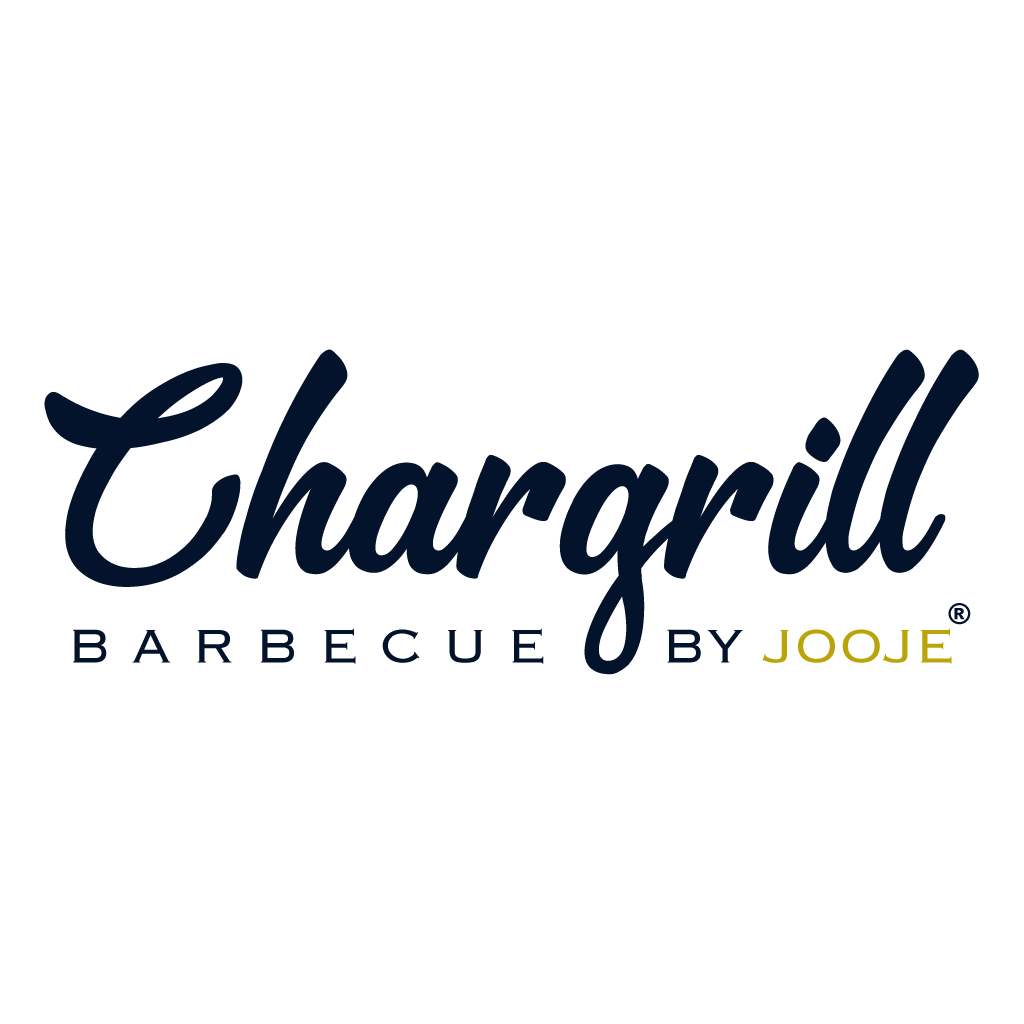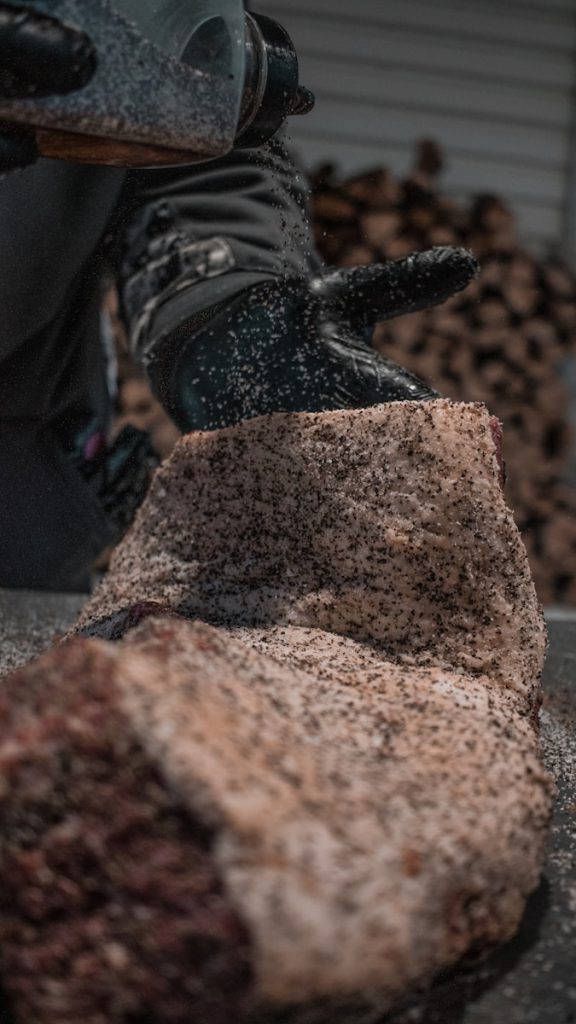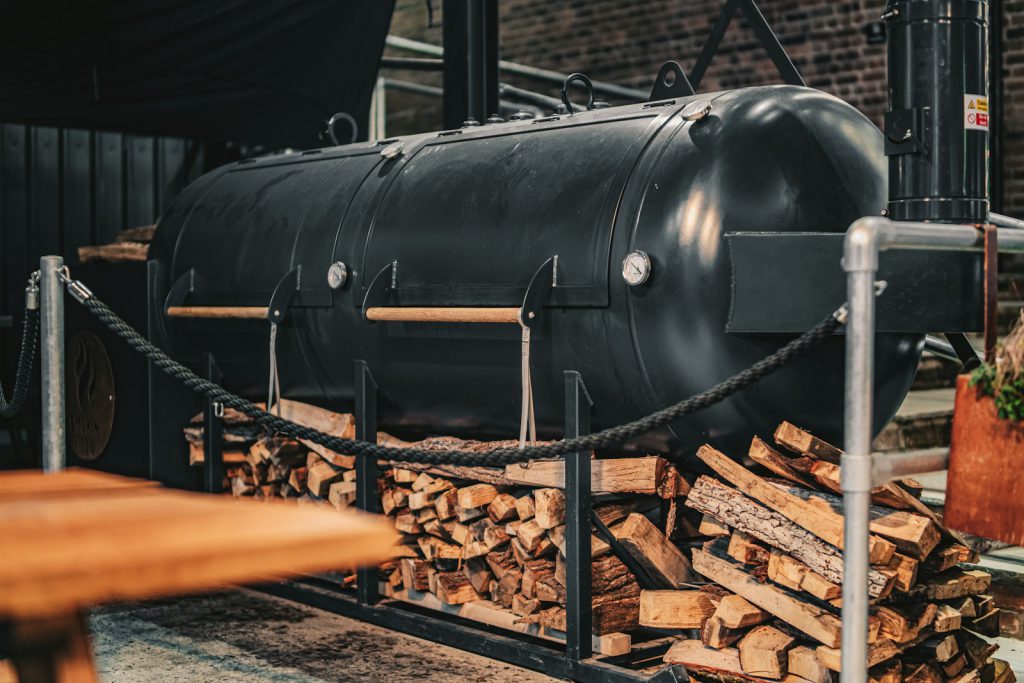BBQ Dino ribs meals packs, also known as beef plate ribs or dinosaur ribs, are a staple for meat enthusiasts and BBQ aficionados. These ribs are thick, meaty, and packed with flavor, making them a showstopper at any barbecue event. This comprehensive guide will walk you through everything you need to know about preparing, cooking, and serving these mouth-watering ribs.
Barbecue has a rich history, evolving from the early days of open-fire cooking to the modern techniques of smoking and slow-cooking. Dino ribs have become particularly popular due to their impressive size and the deep, smoky flavor that can be achieved with the right techniques. Whether you are a backyard BBQ enthusiast or a seasoned pitmaster, mastering the art of cooking Dino ribs will elevate your barbecue game to new heights.
What Are Dino Ribs?
Dino ribs come from the short plate primal cut of the cow, which is located near the belly. This cut is known for its thickness and meatiness, often resembling what you might imagine a dinosaur rib would look like, hence the name. Unlike beef back ribs, which have less meat, Dino ribs boast a substantial amount of juicy, flavorful meat.
Understanding Beef Rib Cuts
The different cuts of beef ribs can be confusing, so it’s important to understand where Dino ribs fit in:
- Plate Short Ribs: These are the classic Dino ribs, taken from the lower section of the ribcage. They are known for their rich marbling and thick meat.
- Chuck Short Ribs: These are from the chuck primal, near the shoulder. They are slightly less meaty but still provide excellent flavor.
- Back Ribs: Cut from the upper part of the ribcage, these ribs have less meat on top but are still full of flavor, mostly found between the bones.
Each of these cuts has its own unique characteristics, but for the purposes of this guide, we will focus on the plate short ribs due to their superior meat content and flavor.
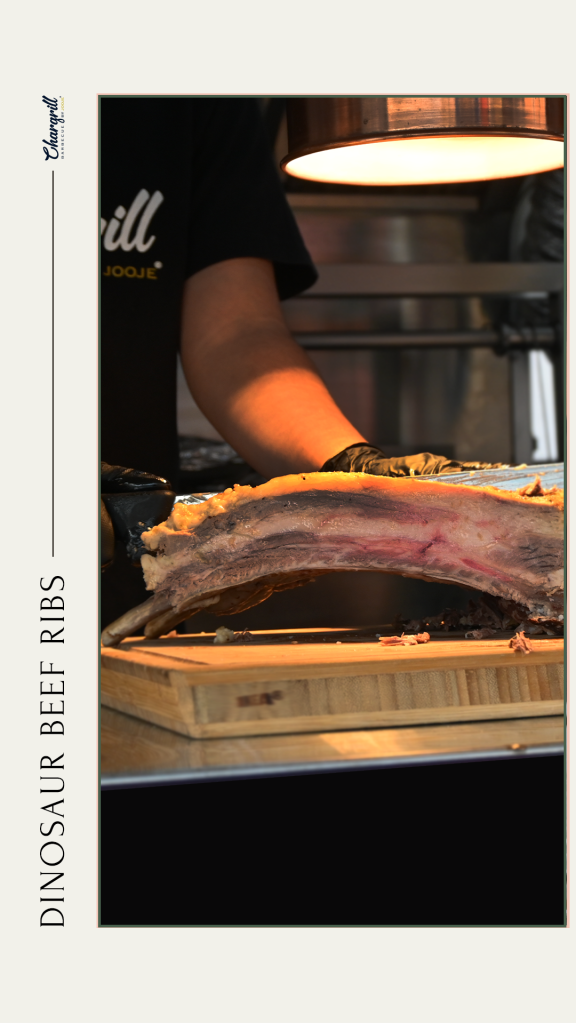
Selecting the Perfect Ribs
When choosing Dino ribs, look for ribs with a good amount of marbling and meat on the bone. This marbling ensures tenderness and flavor. Prime beef ribs are an excellent choice for the best quality and taste.
Tips for Choosing High-Quality Dino Ribs
- Marbling: Look for ribs with a good amount of marbling. The intramuscular fat will render during cooking, keeping the meat juicy and flavorful.
- Size and Thickness: Choose ribs that are thick and uniform in size. This ensures even cooking.
- Color: Fresh ribs should have a bright red color. Avoid ribs that look dull or have a brownish tint.
- Butcher’s Advice: Don’t hesitate to ask your butcher for recommendations. They can often provide insight into the best cuts available.
Understanding Beef Grades
In many countries, beef is graded based on factors like marbling, age, and texture. In the US, for example:
- Prime: The highest quality with abundant marbling.
- Choice: High quality but with less marbling than prime.
- Select: Leaner than choice and prime, but still good quality.
Choosing the right grade can significantly impact the final result of your BBQ.
Preparing Dino Ribs
Trimming and Seasoning
- Trim the Fat: Remove any excess fat and sinew from the ribs to ensure even cooking and better flavor absorption.
- Remove the Membrane: Use a paper towel to grip and pull off the membrane from the back of the ribs.
- Seasoning: Apply a generous amount of rub. A mix of salt, pepper, garlic (SPG), and other spices like paprika, cayenne, or brown sugar can enhance the flavor. Let the ribs sit with the rub for at least 15 minutes, or overnight for deeper flavor penetration .
Detailed Trimming Process
- Tools Needed: Sharp boning knife, paper towels, and a clean workspace.
- Steps:
- Inspect the Ribs: Lay the ribs flat on a cutting board and inspect for any loose pieces of fat or meat that can be trimmed away.
- Remove Silver Skin: The silver skin is a tough membrane on the underside of the ribs. Slide the tip of your knife under it, then use a paper towel to pull it off.
- Trim Excess Fat: Trim any large chunks of fat from the top of the ribs. A thin layer of fat is beneficial as it renders during cooking, but large pieces can be tough and chewy.
Seasoning Tips
- Dry Rub Ingredients:
- 1/4 cup kosher salt
- 1/4 cup coarse black pepper
- 2 tablespoons garlic powder
- 1 tablespoon paprika
- 1 tablespoon brown sugar
- 1 teaspoon cayenne pepper (optional for heat)
- Application: Apply the rub liberally on all sides of the ribs. Ensure even coverage by pressing the seasoning into the meat. Let the ribs rest for at least 30 minutes at room temperature before smoking.
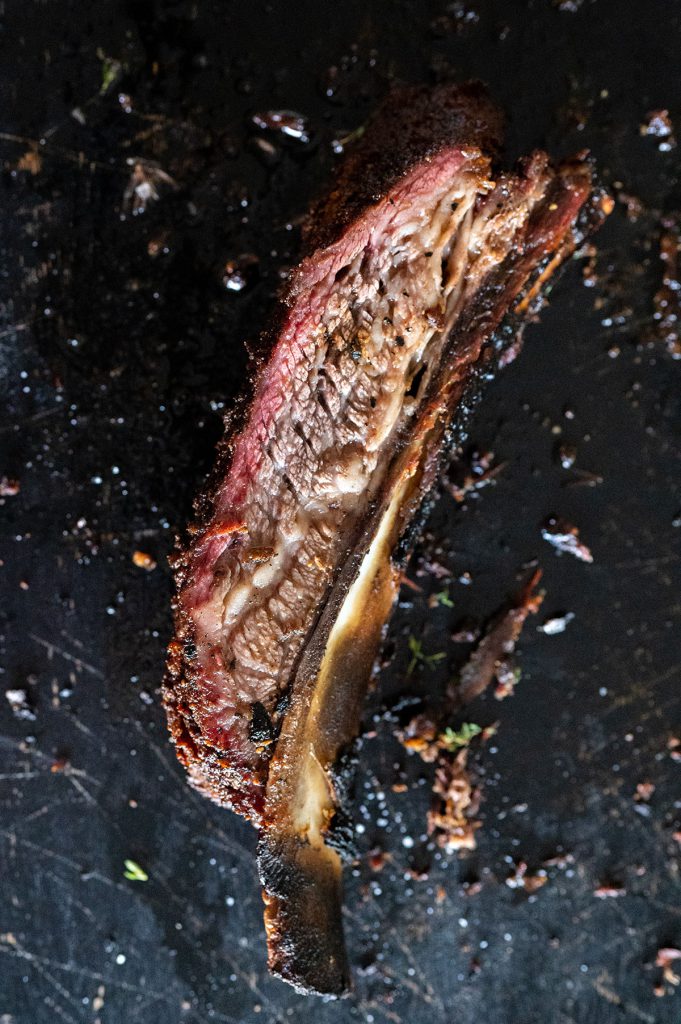
Smoking Dino Ribs
Setting Up the Smoker:
- Temperature: Preheat your smoker to 250-275°F (121-135°C).
- Wood Choice: Hickory and pecan wood are popular choices for a rich, smoky flavor. You can also experiment with other woods like oak or fruitwoods for a unique taste
Preparing the Smoker
- Charcoal and Wood: Start with a small amount of charcoal and a few wood chunks. Avoid starting with a large fire, as it can be challenging to control the temperature.
- Vent Management: Keep all vents open initially. As the smoker reaches the desired temperature, adjust the vents to maintain a steady heat. A small fan can help stabilize the temperature by ensuring proper airflow.
- Water Pan: Place a water pan in the smoker to maintain humidity and prevent the meat from drying out.
The Smoking Process
- Initial Smoke: Place the ribs bone side down in the smoker. Maintain a temperature of 200-250°F for the first few hours to allow the smoke to penetrate the meat. Spritz the ribs every 30 minutes with a mixture of apple cider vinegar and water to keep them moist
- Increase Heat: Once the internal temperature reaches 140°F, increase the smoker temperature to 250-275°F and continue smoking until the ribs reach an internal temperature of around 200°F.
- Wrapping: If the bark is dark enough, wrap the ribs in butcher paper or foil to retain moisture and continue cooking until tender
Advanced Smoking Techniques
- Smoke Ring: Achieve a beautiful smoke ring by maintaining a low initial temperature. The smoke ring is a pink layer just below the surface, prized for both appearance and flavor.
- Spritzing: Common spritz mixtures include apple cider vinegar, beer, or beef broth. Spritzing helps maintain moisture and enhances the bark development.
- Bark Formation: The bark is the flavorful crust that forms on the exterior of the ribs. It’s achieved through the Maillard reaction, where proteins and sugars caramelize under heat. Proper seasoning and spritzing help develop a rich, dark bark.
Finishing and Serving
After the ribs have reached the desired internal temperature, let them rest for 20-30 minutes to allow the juices to redistribute. Slice between the bones and serve with your favorite BBQ sides like coleslaw, potato salad, or baked beans
Resting and Slicing
- Resting: Place the ribs on a cutting board and loosely tent with foil. This resting period allows the juices to redistribute within the meat, resulting in a juicier bite.
- Slicing: Use a sharp knife to slice between the bones. Cut against the grain for the most tender bites.
Serving Suggestions
- Presentation: Arrange the ribs on a platter with a garnish of fresh herbs or sliced onions for a visually appealing presentation.
- Sauces: Offer a variety of BBQ sauces on the side, including traditional, spicy, and sweet options to cater to different preferences.
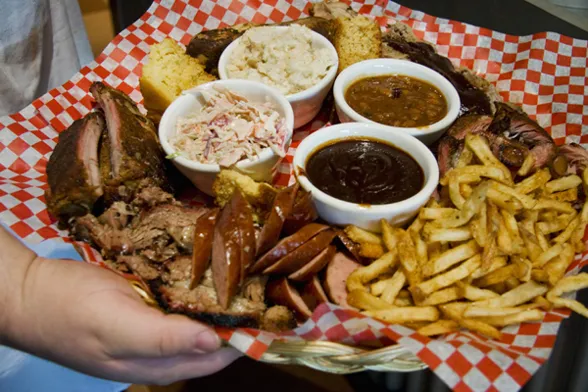
Sides and Pairings
Dino ribs pair well with a variety of classic BBQ sides:
- Coleslaw: Creamy and tangy, it provides a refreshing contrast to the rich ribs.
- Potato Salad: A comforting side with a creamy texture and tangy flavor.
- Baked Beans: Adds a sweet and savory element to your meal.
- Cornbread: A sweet and buttery side that complements the smoky ribs.
- Mac and Cheese: Decadent and cheesy, it’s a must-try for BBQ lovers
Side Dishes Recipes
- Classic Coleslaw:
- 1/2 head green cabbage, shredded
- 1/2 head purple cabbage, shredded
- 2 large carrots, shredded
- 1 cup mayonnaise
- 1/4 cup apple cider vinegar
- 1 tablespoon sugar
- Salt and pepper to taste
- Instructions: Mix all ingredients in a large bowl and refrigerate for at least an hour before serving.
- Southern Potato Salad:
- Ingredients:
- 5 large potatoes, boiled and cubed
- 3 hard-boiled eggs, chopped
- 1 cup mayonnaise
- 1/4 cup yellow mustard
- 1/2 cup diced pickles
- 1/4 cup diced onions
- Salt and pepper to taste
- Instructions: Mix all ingredients in a large bowl until well combined. Chill in the refrigerator for at least an hour before serving.
- Ingredients:
- Baked Beans:
- Ingredients:
- 2 cans of baked beans
- 1/2 pound ground beef
- 1 small onion, diced
- 1/4 cup BBQ sauce
- 2 tablespoons brown sugar
- 1 tablespoon Worcestershire sauce
- Instructions: Brown the ground beef and onions in a skillet. Combine all ingredients in a baking dish and bake at 350°F (175°C) for 30-40 minutes.
- Ingredients:
- Cornbread:
- Ingredients:
- 1 cup cornmeal
- 1 cup all-purpose flour
- 1/4 cup sugar
- 1 tablespoon baking powder
- 1/2 teaspoon salt
- 1 cup buttermilk
- 1/4 cup melted butter
- 1 egg
- Instructions: Mix dry ingredients in a bowl. In another bowl, combine buttermilk, butter, and egg. Mix wet ingredients into dry ingredients until just combined. Pour into a greased baking pan and bake at 400°F (200°C) for 20-25 minutes.
- Ingredients:
- Mac and Cheese:
- Ingredients:
- 2 cups elbow macaroni
- 1/4 cup butter
- 1/4 cup all-purpose flour
- 2 cups milk
- 2 cups shredded cheddar cheese
- Salt and pepper to taste
- Instructions: Cook macaroni according to package directions. In a saucepan, melt butter and stir in flour. Gradually add milk, stirring until thickened. Remove from heat and stir in cheese until melted. Combine with cooked macaroni.
- Ingredients:
Storage and Leftovers
Store leftover Dino ribs in an airtight pack or container in the refrigerator for up to 3-4 days. Reheat them gently in the oven or enjoy them cold in a BBQ sandwich. Leftover meat can also be used to make a hearty smoked queso dip (Cooks with Soul).
Reheating Tips
- Oven: Preheat your oven to 250°F (121°C). Place the ribs in a baking dish, add a splash of beef broth or water to keep them moist, cover with foil, and heat for about 30 minutes or until warmed through.
- Microwave: If you’re short on time, you can reheat ribs in the microwave. Place them on a microwave-safe plate, cover with a damp paper towel, and heat on medium power for 2-3 minutes, checking and rotating as needed.
Creative Uses for Leftovers
- BBQ Sandwiches: Shred the leftover meat and mix with your favorite BBQ sauce. Serve on a bun with coleslaw.
- Tacos: Use shredded Dino rib meat as a filling for tacos. Top with fresh salsa, avocado, and a squeeze of lime.
- Salads: Add shredded rib meat to a hearty salad with greens, cherry tomatoes, corn, and a tangy vinaigrette.
- Smoked Queso Dip: Combine leftover meat with queso blanco, gouda, tomatoes, onions, and jalapeño. Heat until the cheese is melted and serve with tortilla chips
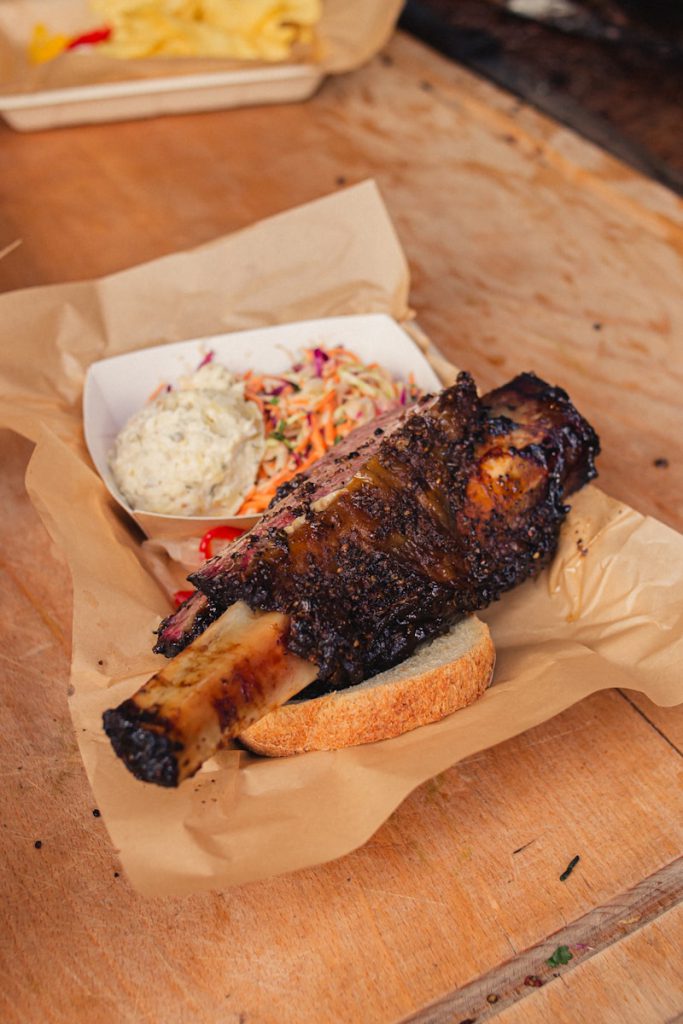
fixing Common Issues
- Dry Ribs: Ensure you maintain a consistent temperature and spritz the ribs regularly. Dry ribs can also be a result of overcooking. Use a meat thermometer to monitor internal temperatures accurately.
- Tough Meat: Cook the ribs low and slow, and allow them to rest properly before slicing. Tough meat is often the result of not cooking long enough. Remember that Dino ribs need ample time to break down the connective tissue.
- Overly Smoky Flavor: Balance the type and amount of wood used, and avoid over-smoking the meat. Using a milder wood like apple or cherry can help if you find the flavor too intense.
- Inconsistent Temperature: Use a reliable smoker and monitor it closely. Wind and weather can affect your smoker’s temperature, so make adjustments as needed to keep it steady .
Table: Common Smoking Issues and Solutions
| Issue | Cause | Solution |
|---|---|---|
| Dry ribs | Inconsistent temperature, overcooking | Maintain a steady temperature, use a meat thermometer, spritz regularly |
| Tough meat | Under-cooking, high heat | Cook low and slow, ensure internal temp reaches 200°F, allow to rest |
| Overly smoky flavor | Excessive wood smoke | Use less wood, opt for milder woods like apple or cherry |
| Inconsistent temperature | Wind, weather, smoker inefficiency | Use a smoker blanket, monitor and adjust vents |
BBQ Dino ribs are a delectable treat that requires patience and attention to detail, but the results are well worth the effort. Whether you’re a seasoned pitmaster or a BBQ novice, following these guidelines will help you create ribs that are tender, flavorful, and unforgettable.
Dino Ribs In Australian BBQ Culture
Australia has a vibrant BBQ culture that makes ready to eat bbq packs and catering an integral part of social gatherings. Whether it’s a casual weekend get-together or a festive holiday celebration, barbecuing is a beloved tradition. Dino ribs can add a touch of American BBQ flair to your next Aussie barbie.
Local Ingredients and Substitutes
- Beef Ribs: In Australia, you can find high-quality beef ribs at local butchers and supermarkets. Look for ribs with good marbling and a thick layer of meat.
- Seasonings and Rubs: While traditional American BBQ rubs can be used, you can also incorporate Australian flavours such as bush spices, wattleseed, or Tasmanian pepperberry for a unique twist.
- Wood Choices: For smoking, you can use local woods like Australian red gum, ironbark, or fruitwoods such as apple or cherry, which impart a distinct flavour to the meat.
Cooking Methods Adapted for Australian BBQs
- Charcoal and Gas BBQs: Many Australians use gas BBQs, which can be adapted for smoking by using a smoker box filled with wood chips. For those using charcoal BBQs, maintaining a consistent low temperature is key.
- Offset Smokers: If you have an offset smoker, you can achieve a more authentic smoked flavour. Ensure you maintain a steady temperature and add wood chunks regularly.
- Temperature Control: Australian weather can be variable, so consider using a BBQ thermometer to monitor internal temperatures accurately.
Popular Sides and Pairings in Australia
- Aussie Slaw: A fresh coleslaw made with a mix of cabbage, carrots, and a tangy dressing.
- Potato Bake: A creamy and cheesy potato bake is a popular side that pairs well with the richness of Dino ribs.
- Damper: A traditional Australian bread that can be cooked on the BBQ and served with butter and honey.
- Pavlova: For dessert, a pavlova topped with fresh fruits provides a sweet finish to your BBQ feast.
Tips for Hosting an Aussie BBQ with Dino Ribs
- Timings: Start early to ensure your ribs are perfectly cooked and have ample time to rest before serving.
- Drinks: Pair your Dino ribs with local beers, wines, or even a classic Aussie lemon, lime, and bitters.
- Atmosphere: Set up a relaxed outdoor setting with plenty of seating, shade, and music to enhance the BBQ experience.
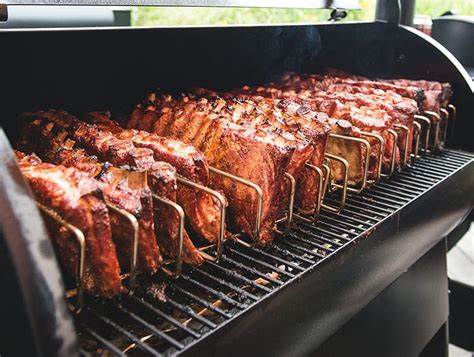
Why Are They Called Dinosaur Ribs?
The term “Dinosaur Ribs” is a colloquial nickname for beef plate ribs, primarily due to their enormous size and meaty appearance. Here’s a detailed explanation of why these ribs have earned such a prehistoric moniker:
Size and Appearance
Beef plate ribs are significantly larger and meatier compared to other types of ribs, such as pork ribs or beef back ribs. When cooked, they can look like they came from a dinosaur due to their substantial size and the impressive amount of meat on the bones. The thick layer of meat on top of the rib bones makes them resemble the kind of rib that you might imagine a dinosaur eating or the kind of rib that Fred Flintstone might have enjoyed in “The Flintstones.”
Visual Impact
When served, Dino ribs create a dramatic visual impact that is reminiscent of something prehistoric. This visual association with dinosaurs helps cement the nickname in the minds of BBQ enthusiasts and diners. The large bones and substantial meat give them a primal, almost caveman-like appearance that fits well with the imagery of dinosaurs
Marketing and Popularity
The nickname “Dinosaur Ribs” also serves as a catchy and appealing way to market these ribs. It captures attention and sparks curiosity, making them more memorable to consumers. The name evokes a sense of excitement and adventure, aligning well with the experience of enjoying a hearty, robust barbecue meal.
Cultural References
The name also taps into popular culture and the fascination with dinosaurs that many people have from childhood. This cultural reference makes the ribs more intriguing and relatable, adding an element of fun to the dining experience (Backyahd BBQ).
Key Characteristics of Dinosaur Ribs
- Origin: Derived from the short plate primal cut, located near the cow’s belly.
- Meat Content: Known for their thick, juicy meat covering the bones.
- Cooking Method: Typically smoked low and slow to achieve tender, flavorful results.
- Size: Larger than other rib cuts, contributing to their nickname.
Difference Between Dino Ribs and Short Ribs in Beef
Understanding the distinction between Dino ribs and short ribs is essential for any BBQ enthusiast. Both cuts come from different parts of the cow and offer unique culinary experiences. Here’s a detailed comparison:
Dino Ribs
- Cut and Location: Dino ribs, also known as beef plate ribs, come from the short plate primal cut of the cow, located near the belly. They are taken from the lower section of the ribcage and include ribs 6 through 8 .
- Size and Meatiness: These ribs are known for their impressive size and thickness, often referred to as “dinosaur” ribs because of their massive, meaty appearance. They have a substantial amount of meat on top of the bones, which makes them ideal for slow smoking and grilling
- Flavor and Texture: Dino ribs are well-marbled, which means they have a higher fat content that renders down during cooking, resulting in tender, juicy, and flavorful meat. The significant amount of connective tissue in these ribs also contributes to their rich taste when cooked low and slow.
Short Ribs
- Cut and Location: Short ribs can come from two primary areas of the cow – the chuck (shoulder area) and the plate (near the belly). The chuck short ribs are cut from the front of the cow, while plate short ribs come from the same area as Dino ribs but are typically smaller and less meaty (A License To Grill) (Smoked BBQ Source).
- Size and Meatiness: Compared to Dino ribs, short ribs are generally smaller and can be cut in different styles:
- English Cut: These are cut parallel to the bone, with each piece containing a single rib bone and a thick layer of meat on top.
- Flanken Cut: These are cut across the bones, resulting in thin strips of meat with multiple small bones in each piece.
- Flavor and Texture: Short ribs, particularly when cut from the chuck, are known for their beefy flavor and tend to be very tender when braised. The plate short ribs share a similar richness to Dino ribs but are more accessible and often used in stews and braises.
Cooking Methods and Applications
- Dino Ribs: Best suited for smoking or slow roasting. The goal is to cook them at a low temperature for an extended period to break down the connective tissue and render the fat, resulting in a tender and flavorful end product. These ribs are often the star of a BBQ feast due to their impressive size and taste.
- Short Ribs: Versatile in cooking methods. They can be braised, grilled, or smoked. Braising is a popular method, where the ribs are cooked slowly in a flavorful liquid until they become fall-off-the-bone tender. Short ribs are also used in various international cuisines, such as Korean BBQ (galbi), where they are marinated and grilled
Table: Dino Ribs vs. Short Ribs
| Aspect | Dino Ribs | Short Ribs |
|---|---|---|
| Cut Location | Short plate primal (near belly) | Chuck (shoulder) or plate (near belly) |
| Size and Meatiness | Large, thick, meaty | Smaller, varies by cut (English or Flanken) |
| Marbling and Fat | High marbling, rich flavor | Moderate marbling, beefy flavor |
| Best Cooking Method | Smoking, slow roasting | Braising, grilling, smoking |
| Popular Uses | BBQ, smoking, impressive presentations | Stews, braises, Korean BBQ (galbi) |
In summary, while Dino ribs and short ribs both offer delicious and rich flavors, they differ significantly in size, cut location, and preferred cooking methods. Dino ribs are the larger, show-stopping option, perfect for BBQ and smoking, whereas short ribs provide versatility and are well-suited for braising and grilling.
Incorporating Dino ribs into your Australian BBQ repertoire can bring a new level of excitement and flavour to your gatherings. By using local ingredients and adapting cooking methods to suit Australian BBQs, you can create a memorable dining experience that honours both American BBQ traditions and Australian culinary creativity. Happy grilling, mates!
